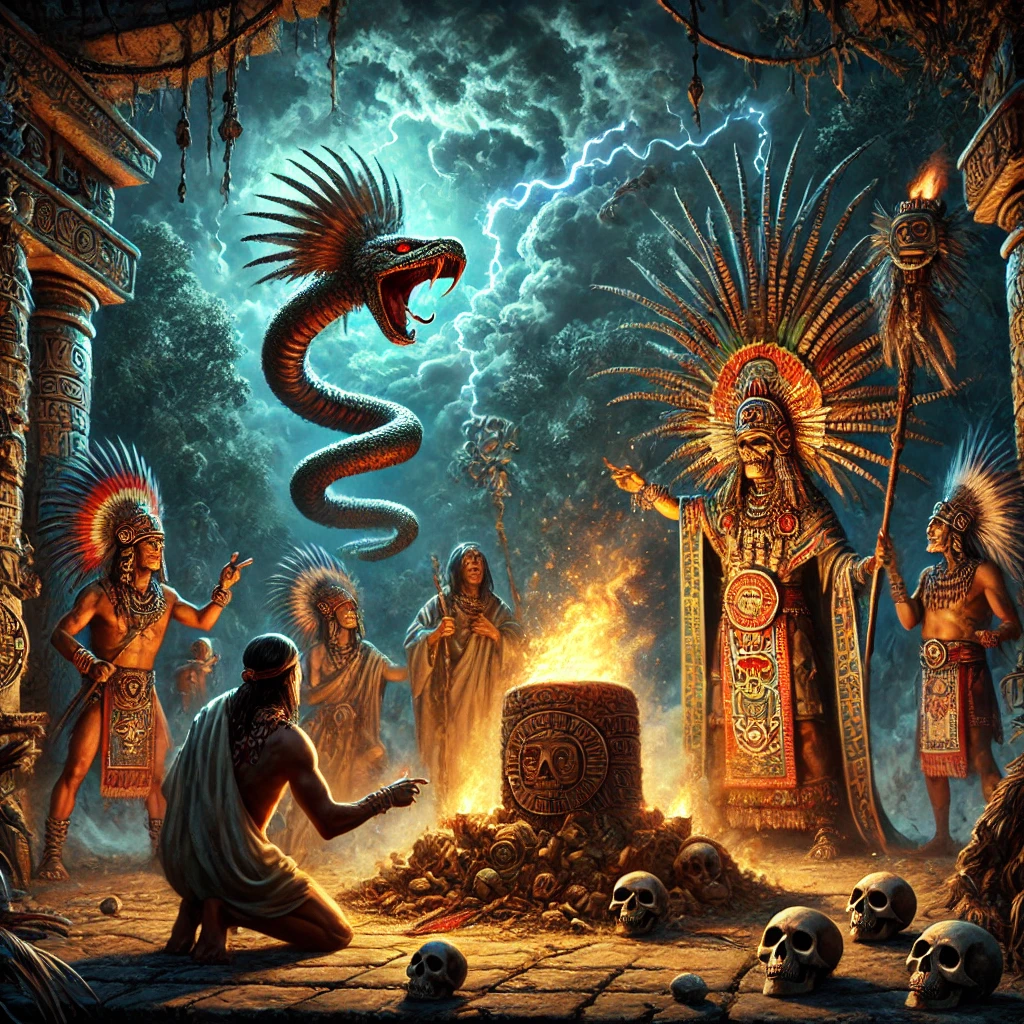The history of curseology, or the study of curses, in the ancient Americas, particularly within the Aztec Empire, is a fascinating journey into the spiritual, political, and social aspects of Aztec society. While not “curseology” per se in their terminology, the Aztecs held deep beliefs in curses, supernatural retribution, and divine punishments governed by their gods and spiritual practices. Here’s a dive into how curses were perceived, implemented, and believed to operate in the Aztec Empire:
1. Origins and Beliefs in Supernatural Forces
- Gods and Spirits: The Aztecs were polytheistic, worshipping numerous gods who governed natural and human phenomena, from weather and fertility to war and death. Many of these gods were seen as dualistic—capable of both blessings and curses.
- Tlaloc and Mictlantecuhtli: Tlaloc, the rain god, was both revered and feared for his control over life-sustaining rains and destructive storms. Mictlantecuhtli, god of the underworld, governed the dead but was also believed to hold powers over curses related to death and misfortune.
2. Ritualistic Curse Practices
- Human Sacrifice as a Double-Edged Curse and Blessing: The Aztecs believed that human sacrifices were a way to appease their gods and avoid curses on their society, such as droughts or plagues. However, this practice could also serve as a curse in warfare, where captives were offered in a way to symbolically curse their enemies.
- Nahualism and Shamans: Aztec shamans, often called nahuals, were believed to possess the power to transform into animals and commune with spirits. They could cast curses upon people or families by invoking these spirits, leading to illness or bad luck. Shamans were also employed to remove curses, acting as intermediaries with the gods.
3. Political Curses and Social Control
- Curses for Treason and Blasphemy: The Aztec elite used curses as a way to control dissent and enforce loyalty. Those who defied the emperor or priests might be publicly cursed, leading to social isolation and potentially supernatural repercussions, from health issues to perceived spiritual possession.
- Montezuma’s Curse: One of the most well-known (though likely apocryphal) curses attributed to the Aztecs is Montezuma’s Curse. Legend has it that the Aztec emperor Montezuma II cursed the Spanish conquistadors as they invaded his empire, leading to widespread myths about curses following those who desecrated Aztec lands.
4. Common Forms of Curses in Aztec Society
- Spiritual Possession and Illness: Illnesses, especially those with no apparent cause, were often attributed to curses. Ailments of the mind or spirit were thought to result from angered gods or malevolent spirits sent by enemies or rival shamans.
- Death Curses: For serious offenses, especially those related to religious sacrilege or betrayal, death curses were feared. These were said to bring immediate misfortune, potentially even death, as an instrument of divine justice.
5. Legacy of Aztec Curses
- Cultural Transmission and Modern Perceptions: Although much of Aztec culture was suppressed after Spanish colonization, elements of Aztec beliefs in curses have persisted among indigenous communities. The concept of curses and spiritual retribution continued to influence folklore, with remnants of Aztec “curseology” being absorbed into local traditions across Mesoamerica.
In sum, curses in Aztec culture were deeply intertwined with their religion, warfare, and social hierarchy. The legacy of these beliefs has shaped a cultural memory of curses as powerful, lingering forces tied to the divine will and the natural world, blending Aztec spirituality with later influences in the Americas.
